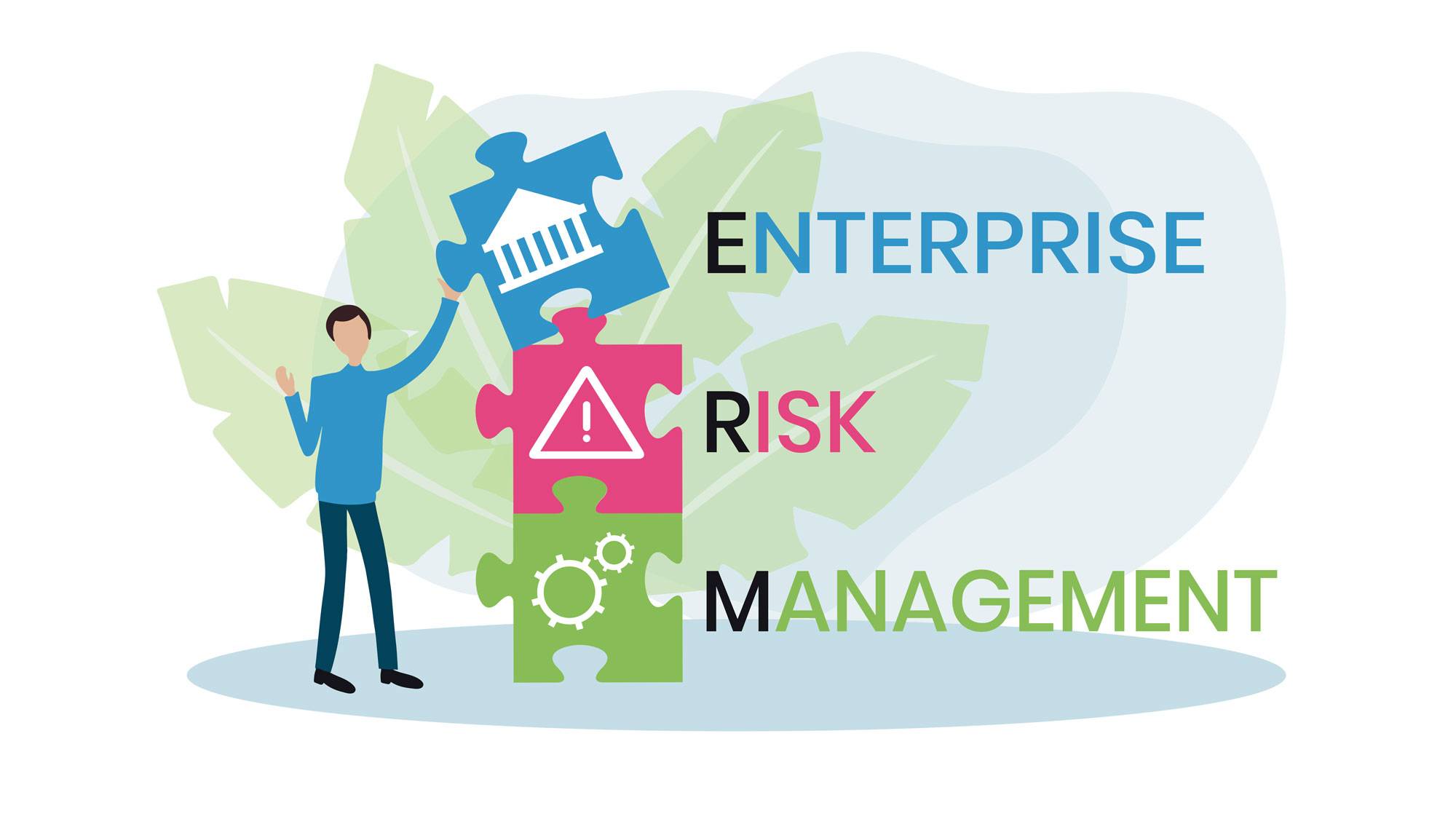Self-Study
Enterprise Risk Management
Strategic guide to Enterprise Risk Management and control systems. Develop comprehensive approaches to identifying, prioritizing, and integrating risk management across all organizational functions.

$308.00 – $368.00Price range: $308.00 through $368.00
Webcasts are available for viewing Monday – Friday, 8am – 8pm ET,
and Saturday & Sunday, 10am – 6pm ET.
Without FlexCast, you must start with enough time to finish. (1 Hr/Credit)
Please fill out the form below and we will reach out as soon as possible.
CPE Credits
11 Credits: Management Services
Course Level
Overview
Format
Self-Study
Course Description
A well-run business needs to factor risk into its daily operations in order to keep from incurring unexpected losses. This risk management CPE provides detailed guidance for doing so. Enterprise Risk Management describes the concept of risk management, how to identify risks, and how to prioritize the responses to these risks. Participants learn how to integrate risk management into an organization’s strategy and day-to-day operations, as well as who is responsible for it. The risk management CPE course addresses risk management at the level of the individual functional area, including treasury and accounting, sales and marketing, human resources, and information technology. There is coverage of contingency planning, insurance, financial analysis, and risk-related measurements and reports. Risk management is a major failing in many organizations; use the planning advice in this course to rise above the crowd.
Need Flexibility?
Purchase now, choose later. Your credits are ready whenever you find the perfect courses for you.
Learning Objectives
Upon successful completion of this course, participants will be able to:
- Recognize the benefits of risk management, the circumstances under which an organization can retain risk, the characteristics of an enterprise risk management system, and the contents of an organization’s risk profile.
- Specify the contents of a credit rating system, and the circumstances under which operational hedges, forward contracts, payment netting, call options, and interest rate swaptions are used.
- Identify the risk mitigation efforts that can benefit from centralized marketing management and product testing, as well as the tactics used to mitigate the risk of false marketing claims.
- Specify the uses of surety bonds, as well as the available risk mitigation alternatives for late deliveries.
- Recognize the alternatives available to reduce the risks of insufficient capacity.
- Identify the risk-related benefits of offering a richer benefits package to employees, as well as the options available for offsetting a decline in employee morale.
- Identify the uses to which multiple scenario modeling and internal audits can be put, as well as how to reduce the risk of issuing financial statements that contain errors.
- Recognize which risk can be reduced by the use of a hot site, and the risk represented by portable storage media.
- Specify the risk mitigation tactics related to political risk and alliance risk.
- Identify the employee notification systems that can be used in the event of an emergency, which forms of communication are the most effective, and which issues with employees may arise immediately after a disaster has occurred.
- Recognize the reasons why deductibles and co-pay are included in insurance contracts, the issues with all-perils coverage, and the circumstances under which reimbursement occurs under business interruption insurance.
- State how risk should be incorporated into analyses involving pricing, dividends, capital budgeting, and research & development.
- Identify the uses to which risk-related reports can be put, the types of leading indicators, and how to evaluate credit ratings.
Course Specifics
SS624406415
November 12, 2024
There are no prerequisites.
None
232
Compliance Information
CMA Notice: Western CPE makes every attempt to maintain our CMA CPE library, to ensure a course meets your continuing education requirements please visit Insitute of Management Accountants (IMA)
CFP Notice: Not all courses that qualify for CFP® credit are registered by Western CPE. If a course does not have a CFP registration number in the compliance section, the continuing education will need to be individually reported with the CFP Board. For more information on the reporting process, required documentation, processing fee, etc., contact the CFP Board. CFP Professionals must take each course in it’s entirety, the CFP Board DOES NOT accept partial credits for courses.
Meet The Experts

Steven M. Bragg, CPA, is a full-time book and course author who has written more than 300 business books and courses. He provides Western CPE with self-study courses in the areas of accounting and finance, with an emphasis on the practical application of accounting standards and management techniques. A sampling of his courses include the The New Controller Guidebook, The GAAP Guidebook, Accountants’ Guidebook, and Closing the Books: An Accountant’s Guide. He also manages the Accounting Best Practices podcast. Steven has been the CFO or controller of both public and private companies and has been a consulting manager with Ernst & Young and …
Related Courses
-
 Management Services
Management Services
Project Management: A Financial Perspective
Delta CPE LLC QAS Self-Study
Credits: 9 $261.00
QAS Self-Study
Credits: 9 $261.00 -
 Management Services
Management Services
The Balanced Scorecard: Strategic-Based Control
Delta CPE LLC QAS Self-Study
Credits: 2 $58.00
QAS Self-Study
Credits: 2 $58.00 -
 Management Services
Management Services
101 Financial Solutions: Diagnosis and Remedy
Delta CPE LLC QAS Self-Study
Credits: 10 $290.00
QAS Self-Study
Credits: 10 $290.00
